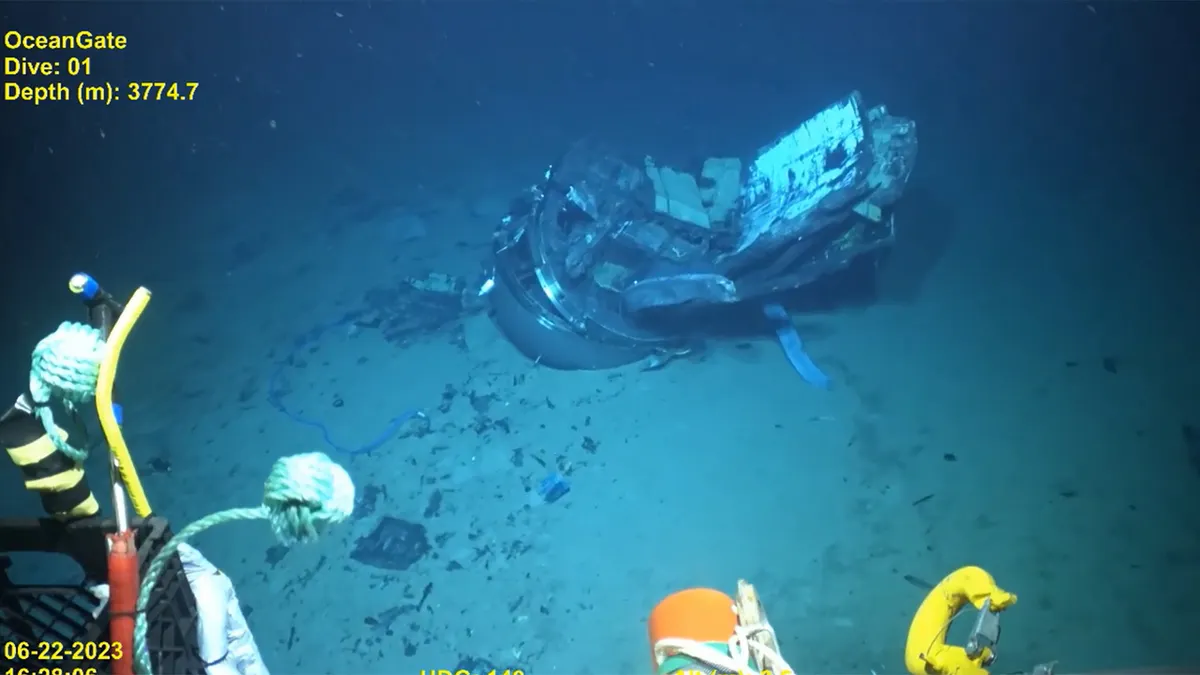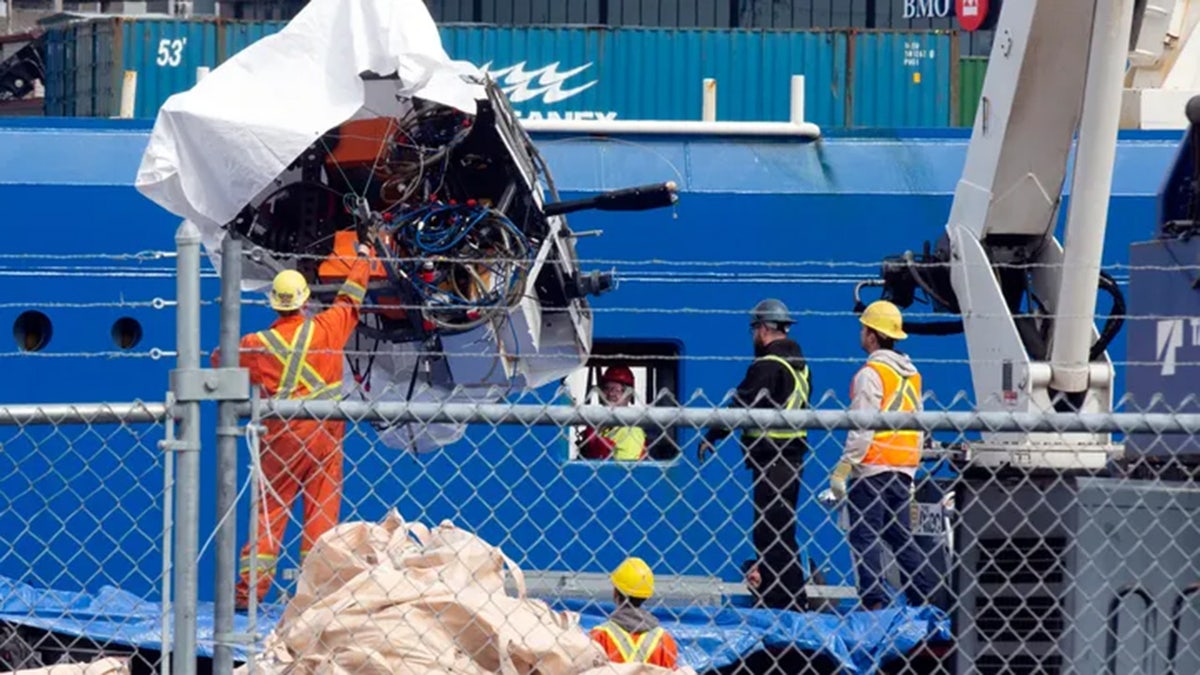Explosive new report blames OceanGate and its CEO for ‘preventable’ Titan sub disaster
NEWYou can now listen to Fox News articles!
A damning new report on the Titan submersible disaster that killed five people has revealed that the tragedy was preventable, and the result of a flawed experimental design and ignored safety warnings — with particular culpability placed on OceanGate CEO Stockton Rush.
The 335-page report by the U.S. Coast Guard (USCG) is the first full government post-mortem on the tragedy to date and the first official document to clearly assign blame to OceanGate, the now-defunct operators of the ill-fated vessel, and Rush.
The report paints Rush as the architect of the submersible’s failure who overruled engineers’ warnings about the vessel’s flawed design, which ultimately led to the vessel imploding near the Titanic wreck in the North Atlantic Ocean in 2023, resulting in the instantaneous death of all five occupants.
VIDEO SHOWS OCEANGATE CEO’S WIFE REACT AFTER SOUND NOW THOUGHT TO HAVE BEEN TITAN SUB IMPLOSION
Rush, who was piloting Titan when it imploded nearly 11,000 feet below the Atlantic Ocean, insisted on using a five-inch-thick carbon fiber hull despite failed model tests and industry opposition. The submersible’s viewport was only rated for depths of 2,130 feet, far less than the 12,500 feet needed to reach the Titanic.

“This marine casualty and the loss of five lives was preventable,” said Jason Neubauer, the USCG Titan Marine Board of Investigation (MBI) chair. “The two-year investigation has identified multiple contributing factors that led to this tragedy, providing valuable lessons learned to prevent a future occurrence.”
Previous reports focused on the technical cause of the Titan’s implosion but stopped short of assigning blame.
“Mr. Rush exerted full control over every facet of the company’s operations and engineering decisions… His refusal to prioritize safety and his dominant leadership style created an environment where the Titan’s eventual implosion became almost a certainty,” the report found.
The board determined the primary contributing factors were OceanGate’s inadequate design, certification, maintenance and inspection process for the Titan. Other factors included a toxic workplace culture at OceanGate, weak safety rules for deep-sea subs like Titan — especially those using new or experimental designs — and a broken system for protecting employees who tried to speak out.
Titan suffered a catastrophic implosion due to structural failure of its carbon fiber composite pressure hull and the carbon fiber hull showed signs of fatigue and delamination in testing before the fatal dive. While OceanGate engineers and advisors raised serious concerns about its safety margin, they were ignored or sidelined by Rush, per the report.

EERIE VIDEO SHOWS TITAN SUBMERSIBLE TAIL CONE ON OCEAN FLOOR
“Titan’s carbon fiber hull design and construction, in terms of winding, curing, gluing, thickness of hull and manufacturing standards, introduced flaws that weakened the overall structural integrity of the Titan hull,” the report reads. “The carbon fiber pressure hull suffered a full material collapse due to buckling on its final dive.”
Several red flags were raised in previous dives, but Rush continued operating Titan, dismissed internal warnings and concealed critical damage from crew and clients, the report found.
For instance, more than 150 loud hull-cracking noises were heard in a 2019 dive, indicating progressive degradation. A four-foot crack was later found in the original hull, which was de-rated after pressure testing — prompting OceanGate to build a new one. However, throughout the development of both hulls, four one-third scale models were tested and all of them imploded under pressure, reinforcing that the carbon fiber design was unstable.
Additionally, the forward dome of the Titan — a 3,500-pound pressure-bearing component — was designed to be secured with 18 bolts, but Rush only used four bolts, according to testimony from OceanGate’s director of engineering at the time.
During a 2021 Titanic dive, Titan’s four securing bolts sheared off while being hoisted aboard the Horizon Arctic, causing the forward dome to detach and fall onto the Launch and Recovery System platform in a catastrophic mechanical failure that narrowly avoided injuring the crew.
The report found OceanGate bypassed industry-standard certification, ignored its own Health, Safety, and Environmental (HSE) manual and fostered a culture that suppressed safety concerns.

“Had OceanGate adhered to the safety standards outlined in its own HSE Manual and fostered a culture of transparency and accountability, this tragedy would likely have been averted with the final Titan hull removed from service well ahead of its implosion,” the report states.
“Encouraging employees to voice concerns without fear of retaliation and prioritizing safety over expediency could have prevented the sequence of events that led to the disaster. Instead, the company’s systemic failures created an environment where risks were ignored, and consequences were inevitable.”
Along with Rush, U.K. billionaire Hamish Harding, French mariner Paul-Henri Nargeolet and father-son pair Shahzada Dawood and Suleman Dawood also perished in the disaster.
While the passengers signed waivers, they were not fully informed of the degree of experimental engineering involved or prior red flags, according to the report.

CLICK HERE TO GET THE FOX NEWS APP
Neubauer said stronger oversight and clear options for operators who are exploring new concepts in deep-sea exploration.
U.S. regulatory authorities like the USCG and NTSB lacked jurisdiction because the Titan operated in international waters and was registered in the Bahamas. The report called for new legislation to expand U.S. oversight authority over deep-sea commercial submersibles carrying American citizens.
The MBI called for new international safety standards, a ban on unclassed passenger vessels at extreme depths, a national submersible registry and referred potential legal violations to the Justice Department.
